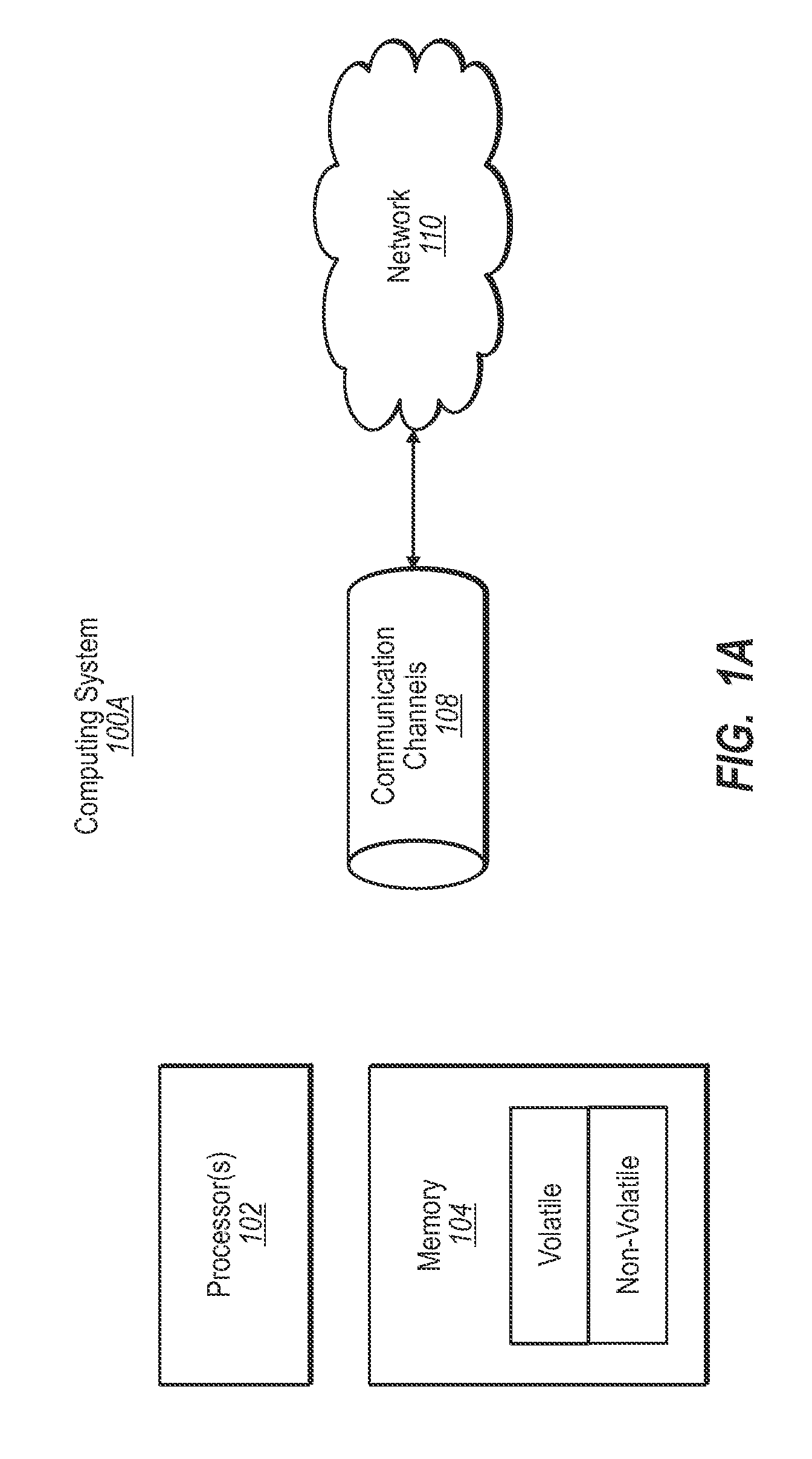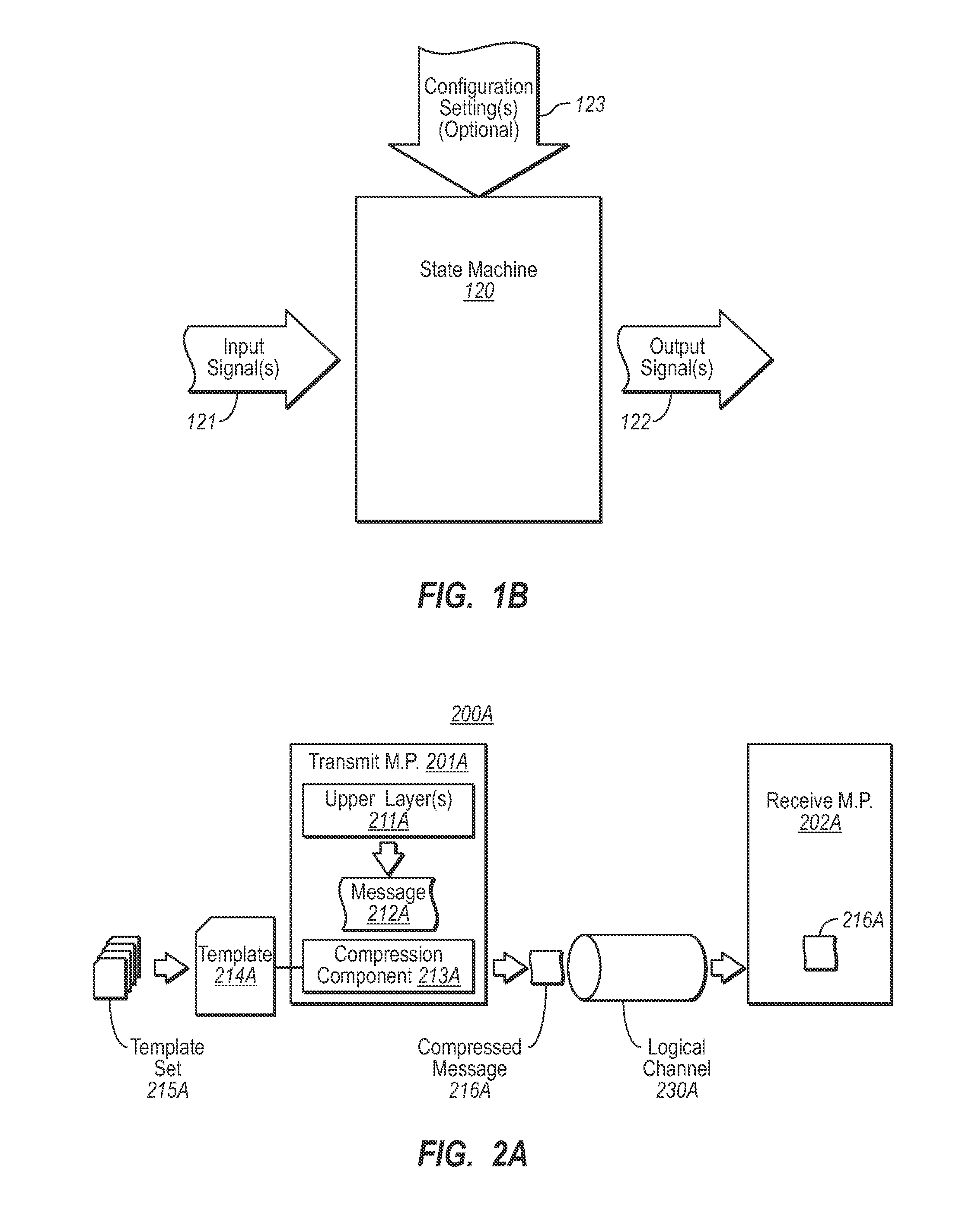Message encoding/decoding using templated parameters
a technology of message encoding and decoding, applied in the field of message encoding/decoding using templated parameters, can solve the problem that the message processor may be quite complex
- Summary
- Abstract
- Description
- Claims
- Application Information
AI Technical Summary
Benefits of technology
Problems solved by technology
Method used
Image
Examples
Embodiment Construction
[0020]In accordance with embodiments described herein, a message compression and decompression is described. The compressed message may be represented in terms of an explicit or implicit template identification, and values of one or more parameters. Based on the template identification, the meaning of the one or more parameters may be understood, whereas the meaning of the parameter(s) might not be understood without a knowledge of the template. The template provides semantic context for the one or more parameters. The transmitting message processor may have compressed the message using the identified template. Alternatively or in addition, the receiving message processor may decompress the message using the identified template. The template itself need not be part of the compressed message as transmitted.
[0021]First, some introductory discussion regarding message processors will be described with respect to FIGS. 1A and 1B. Then, various embodiments of compression and decompression...
PUM
 Login to View More
Login to View More Abstract
Description
Claims
Application Information
 Login to View More
Login to View More - R&D
- Intellectual Property
- Life Sciences
- Materials
- Tech Scout
- Unparalleled Data Quality
- Higher Quality Content
- 60% Fewer Hallucinations
Browse by: Latest US Patents, China's latest patents, Technical Efficacy Thesaurus, Application Domain, Technology Topic, Popular Technical Reports.
© 2025 PatSnap. All rights reserved.Legal|Privacy policy|Modern Slavery Act Transparency Statement|Sitemap|About US| Contact US: help@patsnap.com



